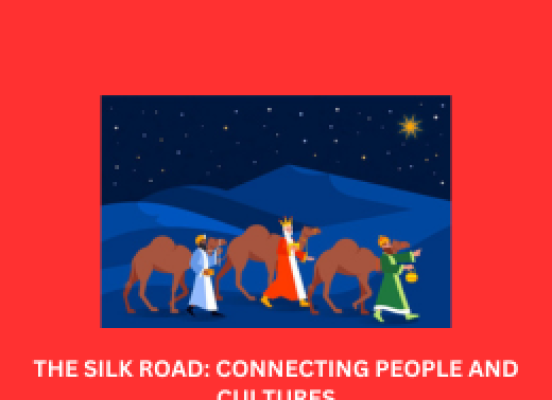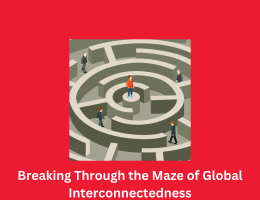
THE SILK ROAD: CONNECTING PEOPLE AND CULTURES
- By admin --
- Wednesday, 22 May, 2024
The Silk Road spanned the Asian continent and represented a form of worldwide economy whilst the regarded world turned into smaller but greater tough to traverse than nowadays. The Silk Road machine has existed for over 2,000 years, with particular routes converting over time. For millennia, pretty valued silk, cotton, wool, glass, jade, lapis lazuli, gold, silver, salt, spices, tea, herbal drugs, meals, culmination, flowers, horses, musical instruments, and architectural, philosophical, and spiritual thoughts traveled the ones routes. The roads themselves were normally in terrible situation. Travelers in caravans needed to brave bleak deserts, high mountains, intense warmness and cold. They had to face bandits and raiders, imprisonment, starvation, and different types of deprivation. Those going by sea braved the uncertainties of climate, poorly constructed ships, and pirates. Yet due to the fact the goods and thoughts had been in excellent call for and commanded high expenses, courtly rewards, or non secular blessings, they have been really worth the trouble of transporting amazing distances.
Chinese Silk Cultivation
The unique production of silk in China is regularly attributed to Fo Xi, the emperor who initiated the elevating of silkworms and the cultivation of mulberry trees to feed them. Xi Lingshi, the spouse of the Yellow Emperor whose reign is dated from 2677 to 2597 B.C.E., is seemed because the legendary Lady of the Silkworms for having advanced the approach for unraveling the cocoons and reeling the silk filament. Archaeological unearths from this era include silk fabric from the southeast Zhejiang province dated to approximately 3000 B.C.E. And a silk cocoon from the Yellow River valley in northern China dated to approximately 2500 B.C.E. Yet silk material fragments and a cup carved with a silkworm layout from the Yangzi Valley in southern China dated to approximately 40005000 B.C.E. Propose that sericulture, the procedure of making silk, can also have an earlier starting place than advised via legend.
Silk on the Road
Evidence of alternate in ancient Chinese silk has been discovered in archaeological excavations in Central Asian Bactria (presently the area round Balkh and Mazar-i-Sharif, Afghanistan) dating to about 500 B.C.E. Strands of silk have been found in historical Egypt from approximately 1000 B.C.E., but these may be of Indian rather than Chinese starting place. Alexander the Great, who ruled much of the recognized world from the Mediterranean to India inside the overdue 4th century B.C.E., wore robes of deep pink-dyed silk. The silk was likely from China, which the Greeks knew as Seres — the vicinity wherein serikos or silk was made — and made ideal use of the uncommon and costly pink dye that was produced by way of the Phoenicians of Tyre from the secretions of sea snails. Yet, in the West, expertise of silk and its change were highly limited. So, too, within the Far East. Sericulture turned into carried to Korea by way of Chinese immigrants in approximately two hundred B.C.E. Though silk become extant in Japan at the flip of the millennium, sericulture became no longer widely known there till approximately the 3rd century C.E.
From Han China to Rome
In 198 B.C.E., the Han dynasty concluded a treaty with a Central Asian human beings, the Xiongnu. The emperor agreed to present his daughter to the Xiongnu ruler and pay an annual gift in gold and silk. By the 1st century B.C.E. Silk reached Rome, initiating the first Silk Road. Pliny, writing about silk, concept it changed into crafted from the down of trees in Seres. It was very popular most of the Romans. People wore rare strips of silk on their apparel and sought extra; they spent increasing quantities of gold and silver, main to a scarcity in precious metals. Coinciding with the improvement of ruling elites and the beginnings of empire, silk turned into associated with wealth and power — Julius Caesar entered Rome in triumph below silk canopies. Over the subsequent three centuries, silk imports elevated, especially with the Pax Romana of the early emperors, which opened up trade routes in Asia Minor and the Middle East. As silk got here westward, newly invented blown glass, asbestos, amber, and red coral moved eastward. Despite some warnings approximately the silk alternate's deleterious results, it became a medium of exchange and tribute, and when in 408 C.E. Alaric the Visigoth besieged Rome, he demanded and received as ransom 5,000 kilos of gold and four,000 tunics of silk.
Central Asia and the Silk Road Today
In formulating the concept of the Silk Road, Richthofen noticed Central Asia as no longer most effective the land bridge among remote civilizations, but as a source of cultural creativity in its own right. He also noticed it as disputed territory, a vicinity that had served because the crossroads of political and army impact. Indeed, manage over the Silk Road, particularly its Central Asian link, turned into severe commercial enterprise for 18th- century colonial powers playing the Great Game. Both the Russians and the British vied for manage over Afghanistan on the restriction of their territorial aspirations. Rudyard Kipling, the English colonial writer, set the fictitious story of Kim against this backdrop, with the hero journeying one of the historical change routes along what's now the Afghan-Pakistan frontier and partaking of what we'd these days call a multicultural journey.





